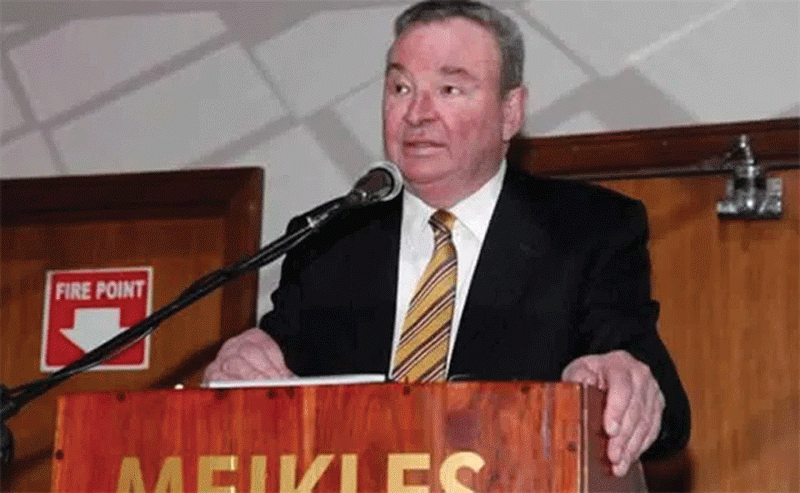
The Zimbabwe Revenue Authority (Zimra) has bemoaned the continued liquidity crunch amid indications from the Zimbabwe Reserve Bank (RBZ) that some banks were holding only 2% cash reserves against a benchmark of 15%.
BY SILAS NKALA
In its revenue performance report for the first half of 2017, Zimra chairperson, Willia Bonyongwe said, there does not seem to be any reprieve to the economy’s liquidity crunch.
“The RBZ has aptly laid the blame squarely on the high indiscipline of Zimbabweans caused by greed and selfishness. It is on record that Zimbabweans have externalised billions of dollars, ranging from the relatively small bank deposits in neighbouring countries, to millions stashed in tax havens globally,” she said.
Bonyongwe said she was confident that because of globalisation and the anti-money laundering laws worldwide, RBZ can and should trace and bring back what was irregularly externalised through the banking system.
“We have to bring back what is due to Zimbabwe. Last quarter we raised alarm on the upward trend in inflation, which threatens to derail economic revival and export growth. Unfortunately, nobody took notice and the annual rate of inflation rose to 0,75% as at May 2017, the highest it has been in more than three-and-a-half years (Zimstat) — a rapid increase from -0,65% in January,” she said.
“This indicates serious inflation pressures in the economy largely driven by the shortage of foreign currency, and the consequent multi-tier pricing by some traders, the resurgence of the parallel foreign exchange market, and the impact of the Statutory Instruments 20 and 26A of 2017 [VAT (General) Amendment Regulations] on prices of the consumer basket. Retailers and traders, in general, are still putting enormous mark ups for local and imported goods.”
Bonyongwe said cost structures need to be revisited urgently in order to curb inflation drivers and avert a return to hyperinflation.
- Chamisa under fire over US$120K donation
- Mavhunga puts DeMbare into Chibuku quarterfinals
- Pension funds bet on Cabora Bassa oilfields
- Councils defy govt fire tender directive
Keep Reading
“This will be even worse because of the multi-currency usage. On the global scene, economic recovery is now more certain and global growth is expected to be 3,5% for 2017 compared to 3,1% last year. Growth is expected to be driven by reduced deflationary pressures, slight rebound in investment, recovery in trade growth despite the uncertainty in Unites States trade policy underpinned by America First, high financial optimism and accommodative monetary policies [International Monetary Fund — World Economic Outlook, 2017],” she said.
Bonyongwe expressed optimism for an improved economy, saying the 2017 economic outlook remains positive, buoyed by the good agricultural season and a battery of measures by the government to stimulate investment, exports and production.
She said RBZ has a number of initiatives, including targeted facilities and incentives to boost exports and has pushed hard to reduce the level of interest rates and bank charges, in general, for exporters in particular.
Bonyongwe said the Office of the President and Cabinet (OPC) is working through all government departments, including Zimra, to integrate and improve the ease of doing business, which would makes it faster, convenient and cheaper to do business in Zimbabwe.
“The government has finally appointed a board for special economic zones [SEZs] in an effort to attract foreign investment. However, local investors continue to lobby to benefit from the SEZs status as well, particularly for those who are export-oriented,” she said.
“The government’s gross domestic product [GDP] projection of 3,7% in 2017 still stands, and is supported by the World Bank outlook projection of 3,8%, although the International Monetary Fund and the AfDB [African Development Bank — African Economic Outlook, 2017] are still very pessimistic.”
Bonyongwe said after a long slump, the Zimbabwe Stock Exchange is now bullish, with a huge jump in market capitalisation, from below $4 billion to about $6 billion by the end of the second quarter of 2017.
“However, at the moment the upsurge is more to do with realigning the portfolio mix by investors to deal with the shortage of the US dollars than with any shift in fundamentals for the underlying assets.”
“The tobacco marketing season started on March 15, 2017. Deliveries by volume of tobacco sold as at June 28, 2017 stood at 168,49 million kilogrammes, which is a 1,32% decline from the 169,02 million kilogrammes sold during the same period last year,” Bonyongwe said.
“The comparable values are $494,98 million in 2017 and $501,20 million in 2016. The average selling price was unchanged at $2,94/kg for both periods, while the highest price was $6/kg a decline of 4% from $6,25 for 2016 (TIMB). Nonetheless, analysts’ expectations are that the current season is expected to exceed the previous year in terms of volume and value sold.”
She said the tobacco inflows have improved broad money supply, which grew by 8,13% from $5,66 billion in January 2017 to $6,12 billion in April 2017.











